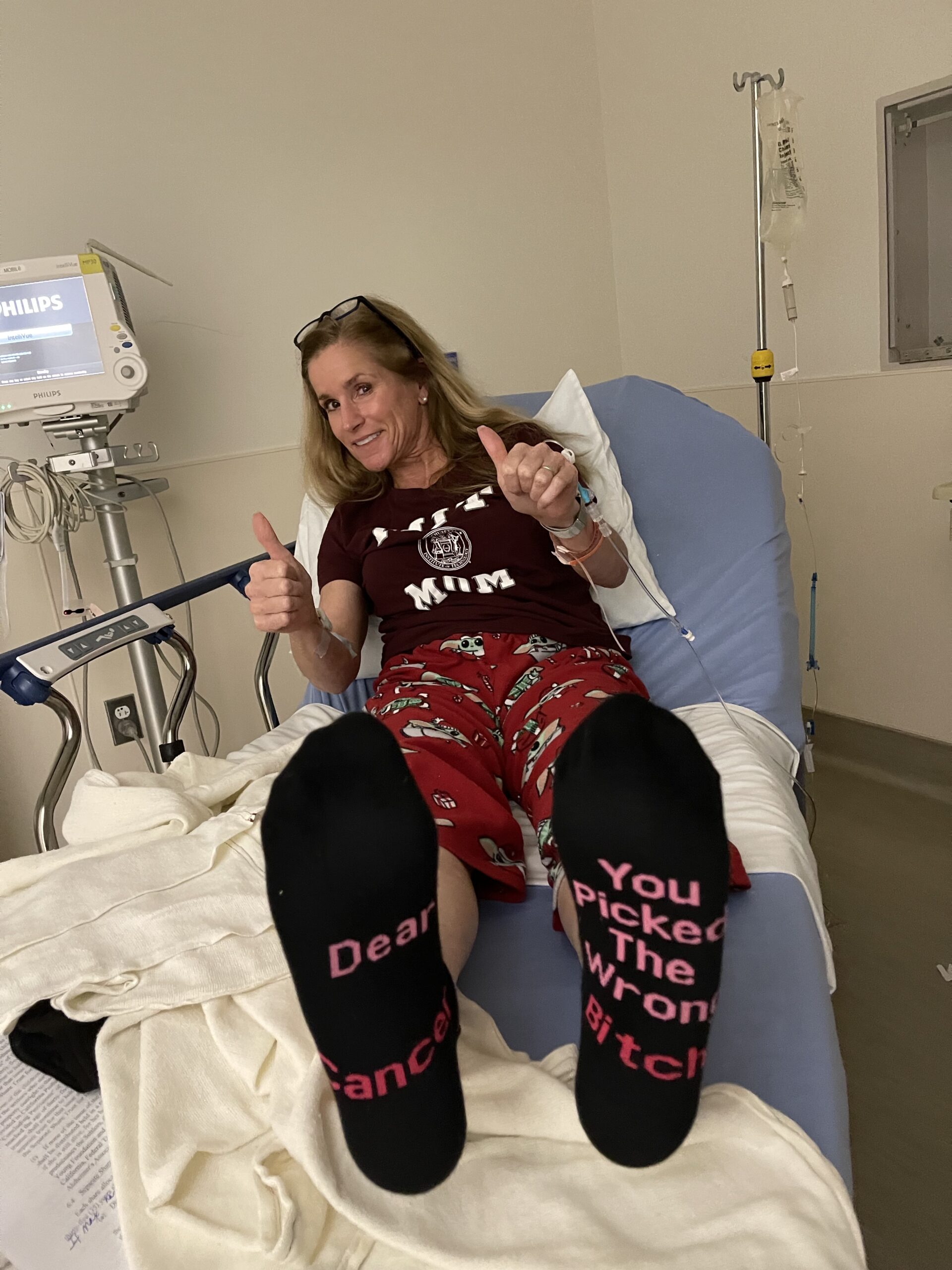March 16, 2023
Immunotherapy understanding day. It’s a long one so get comfortable.
Two basic arms of the immune system. The humoral and the cell-mediated. Humoral and cell-mediated immunity is that humoral immunity (included the complement system but that is another topic all together) produces antigen-specific antibodies, whereas cell-mediated immunity does not. T lymphocytes (T-cells), on the other hand, kill infected cells by triggering apoptosis (cell death). Antigens are typically proteins the antibodies detect. Broadly speaking, humoral responses are to things like bacteria that are outside the cell and the cell-mediated response are to issues that reside inside the cell. We have areas in our body where these type of immunologic cells are concentrated and produced like the tonsils, lymph nodes, spleen, bone marrow, thymus, mucous membranes, etc.

So immunotherapy helps your own body to find and kill cancer cells. Many cells in our body have life cycles and ultimately die. As new cells are made, there can be some errors during the cell division or maturation in the cell’s DNA (some RNA but that another story). These cells may become destined to become a cancer but most of the time these cells either die from their transcription errors or recognized by our immune system and eliminated. It is amazing it does not happen more often as the coding of DNA is very long and must be quite precise. Cancer cells develop as they develope particular transcription errors in particular parts of the DNA called genes (the specific part is a codon-normally a three nucleotide triplet/unit) that make them dangerous instead of an innocent mutation. This can create cells that do not follow the certain lifecycle and function of that particular cell and can grow unchecked. Moreover, these DNA errors create mutation that can make our immune system not recognize these damaged cells and they continue to grow, invade and eventually spread to other parts of the body. Our bodies have 10-13 trillion cells and about 100-130 billion cells die each day and most of the 10 trillion plus cells are remade in about 100 days. So it is amazing how accurate these cells are at being created.
So let’s take a peek at Keytruda® (pembrolizumab). Notice the -mab at the end. These are classes of drugs developed using a monoclonal antibody to target and carry out a function. Monoclonal antibodies are laboratory-produced molecules engineered to serve as substitute antibodies that can restore, enhance, modify or mimic the immune system’s attack on cells that aren’t wanted, such as cancer cells. They can flag cells making them not hidden anymore so that your T cells can recognize and kill the targeted cell. They can trigger the abnormal cell’s membrane to lyse (rip open) destroying the cell. They can block a particular receptor on the abnormal cell preventing it from growing. They can block certain proteins the abnormal cell makes that protects it from the immune system making them easier for your body to find and kill. They can be directly sent to kill the cell directly depending on the vulnerability of the cell it is targeting. It can be made into a vehicle carrying on its back so to speak other drugs that can kill cells. This is pretty unique as the drugs it carries may be toxic to healthy cells. In this case, it brings these killer drugs only to the targeted “bad” cell and spares the healthy non-target cells. They can also deliver radioactive molecules directly to the targeted cell. They can bind to the bad cell and then also bind to the particular immunological cell almost introducing them together and telling the immune cell to fight the “bad” cell. There are other ways in which these molecules work but that gives you an overview. So for cancer, these molecules stimulate the immune system to recognize and take out the cancer cells.
Back to Keytruda®, certain cancers try and hide from the immune system using a PD-1 pathway. This pathway has a protein called PD-1 or programmed cell death protein 1 and is a security checkpoint. T cells migrate around the body with their little tentacle-like projections called receptors that go around and test cells to see if they are ok or not (like the security scanners at the airport). If they are not, they can kill or help recruit other cells to gang up and take the abnormal cell out. This could be a virus-laden cell or another example is a cancer cell. Once the T-Cell recognizes the abnormal cell and then can “teach” other T-cells and future T-cells to better and more rapidly detect the abnormality. A cancer cell is a normal cell that has mutated. Typically the more mutations, the more it doesn’t appear normal and the easier it is to detect. In many situations with cancer, the T-cells are found within the cancer so they recognized the cancer, but they did not kill the cancer cell or were deactivated. In some cancers, they become cloaked and not recognized by the immune system. One such protein is the PD-L1 protein found on the surface of some cancer cells. This sort of “jams” the detection process the protein on the T-cell PD-1 doesn’t recognize the abnormal cell. PD-1 is like a sensor if you will. If it were to detect the cell as bad it then signals the “alarm” protein B7.1 to alert the T-cell that something is wrong and begin the attack. The cancer uses this protein to bind and block the PD-1 and B7.1 receptors of the T-cell. This is called a checkpoint (the PD-1 PDL-1 pathway). Keytruda is like a software update to the T-cells informing them of this pathway and removing the “cloaking device” the cancer cell is using so it can be detected and killed. The other drug in this class that may be considered is Dostarlimab, sold under the brand name Jemperli®. A small but impressive study on dostarlimab using this drug in colorectal cancer patients was conducted at Memorial Sloan Kettering Cancer in New York, showed in the 18 patients this drug was used, the results were nothing short of miraculous. “The trial’s result is being labeled as surprising because every patient was cured completely without any exception. These groundbreaking results are unforeseen in cancer research according to some experts” (Cancer drug had 100% success rate. : NPR. https://www.npr.org/2022/06/07/1103545361/cancer-drug-experimental-rectal-chemotherapy-surgery-treatment-immunotherapy). More on this can be found in the parent article found here: click here for the article .

Keytruda and Jemperli are typically given every 3-6 weeks in an infusion that takes about 30 minutes. Because it is ramping up your immune system it can have some side effects as the cells can start to attack other immunologic-sensitive organs like the thyroid, lung, kidney, skin, and even the heart. However, for most people, these side-effects are not severe and generally this is better tolerated when compared to traditional chemotherapeutic agents alone or in combination. Most of the time, Keytruda is used along with other agents to attack the cancer from more than one angle.
In Beth’s case, she has a particular genetic mutation called a BRAFv600e mutation. BRAF is a gene that makes a protein (an enzyme) that is involved in sending signals in cells and in cell growth. Mutated (changed) forms of the BRAF gene and protein have been found in many types of cancers. These changes can increase the growth and spread of cancer cells. The V600 is the position where the mutation takes place (glutamate-to-valine amino acid substitution at codon 600 if you want to know :). Drugs that target this mutant BRAF protein may kill cancer cells or stop them from growing. The BRAF V600 mutation is most commonly found in mostly in melanoma and slightly less in lung, but it may also be found in some other types of cancer, including cancers of the colon, rectum, thyroid, ovary, and brain. Checking for the BRAF V600 mutation in tumor tissue may help plan cancer treatment. There are different forms of the BRAF V600 mutations, including V600E and V600K. V600E is the most common form. Drugs that target this mutation alone work well in melanoma and were game changers in the treatment of melanoma. In other cancers, the use of a BRAF drug by itself doesn’t prove to be more beneficial than regular chemotherapy. This is the case with cancers of the colon. However, when combined with other targeted agents and immunotherapy, it can be a powerful weapon against the cancer. So Beth will be given this drug to help stop the tumor from growing. This is given in pill form. Common ones are Zelboraf® (vemurafenib) · Tafinlar® (dabrafenib) · Braftovi® (encorafenib). Beth will likely receive the Braftovi but that will depend on the insurance allowances and drug availability.
The other drug she will receive is an epidermal growth factor receptor inhibitor drug. This drug blocks the activity of a protein called epidermal growth factor receptor (EGFR). EGFR is found on the surface of some normal cells and is involved in cell growth. It may also be found at high levels on some types of cancer cells, which causes these cells to grow and divide. When used in combination with the BRAF inhibitor, they can have a synergistic effect and provide a powerful punch to the cancer. The two common types used in colon cancers are VECTIBIX® (panitumumab) or ERBITUX® (cetuximab). Because this is an epidermal involving drug most of these patients will experience some sort of skin rashes and particular cuticle problems. However, again these are usually tolerated reasonably well and are normally less toxic than chemotherapy. Thes drugs are typically given as an infusion over 30-60 minutes every two weeks.
So to review, Beth’s new avenue of attack is to slow or halt the growth of the tumor by attacking its mutation (BRAF) which is one pathway this cancer grows unchecked. Additionally, the growth of the tumor is attacked by blocking the epidermal growth factor. Then its cloaking mechanism is attacked allowing the T-cells to recognize, target, and kill the tumor.





Add comment